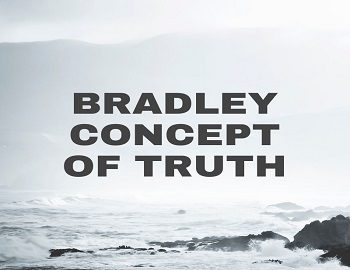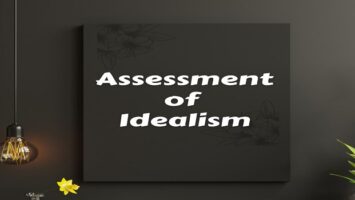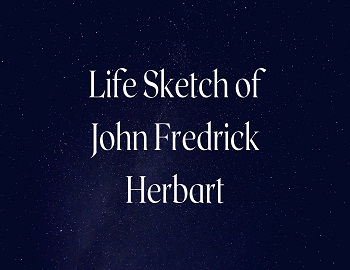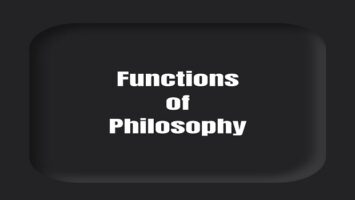Bradley Concept of Truth:
Bradley represents the fundamental Absolutist approach to the problem of truth. Every real thing, according to Bradley, has two aspects, existence and character, the ‘that’ and the ‘what’ respectively. Now, thought distinguishes between existence and character and again relates them in a judgement as subject and predicate. Thus, judgement is an attempt of thought to understand reality. This is done with the help of its distinction between the that and the what, which are related by a judgement ” In every judgement, the genuine subject is Reality, which goes beyond the predicate and of which the predicate is an adjective”. Thus according to Bradley,” Judgement is essentially the re-union of two sides, ‘what’ and ‘that’ provisionally estranged”. Man cannot perceive or conceive Reality in its totality. Hence, he selects a particular aspect of Reality which meets his purpose. In this process, thought isolates an adjective that belongs to Reality but is ‘loosened’ from it. This is done in the form of a judgement.
Now, the adjective applied by thought to a fragment of Reality may or may not be in harmony with it. If it is harmonious the judgement is true because according to Bradley, “Truth must exhibit the mark of internal harmony”. Such a harmony exists when there is no discord between the subject and the predicate. Truth, therefore, exists in coherence, harmony or noncontradiction. Now, it may be pointed out here that if while both the subject and predicate belong to reality, how can there be any lack of harmony among them? Thought only re-unites what it loosens from the Reality, hence how can an adjective be repelled from the Reality. On close scrutiny, however, this objection will appear to be superfluous. As Bradley points out, though all the adjectives loosened are from the Reality and, therefore, should not be incoherent with it, yet it is quite possible that the adjective loosened from one part may not be coherent when applied to a different part. Thus, when a predicate belonging to one part is applied to some other part, it is not true in that case. For example, it is not true to say that milk is black, though both milk and black colour are equally real and may be consistent with some other parts of reality. Thus, while ‘black’ may be a coherent adjective when applied to coal and hair etc., it cannot be applied to milk as the milk is white. Any human judgement, therefore, is true only with respect to a certain particular aspect of Reality. No judgement can be absolutely true just as no judgement can be absolutely false. According to Bradley, the “finite truth must be conditional”. “There will be no error which is totally false”. “All our judgements; to be true, must become conditional”.
This, however, should not create any difficulties in our practical life as Bradley points out, “Our thoughts certainly, for some purposes, may be taken as wholly false or again quite accurate, but Truth and Error, measured by the Absolute must each be subject always to degree”. Thus, there is no inconsistency in the view that while a particular judgement is absolutely true from the standpoint of daily life, it is a relevant truth or even an error from the point of view of the Absolute.
Thus, Bradley believes in degrees of truth like degrees of reality. As has been pointed out earlier, Bradley believes that the appearances represent the Reality in different degrees. Hence the judgements, as applied to different appearances, maybe proportionately more or less true. Therefore, like Reality, truth also has its degrees. Using the criterion of truth as harmony, a judgement may be, more or less true according to its coherence in a wider or narrower system. A judgement which is coherent in a more wide and inclusive system is more true as compared with another which is coherent only within a narrow system. For example- the hypothesis represented by Ptolemy, being coherent in a system very much narrower than that which was comprehended by Coppernican Theory, is less true than the theory of Coppernicus.









Comments (No)